Terbinafine
Uses
Terbinafine is used in the treatment of fungal infections.
How it Works
How Terbinafine works Terbinafine is an antifungal medication that kills and inhibits the growth of fungi by destroying their cell membranes, thereby treating skin infections.
Side Effects
Common side effects of Terbinafine include headache, diarrhea, rash, itching, nausea, abdominal pain, decreased appetite, joint pain, muscle pain, urticaria, dyspepsia, and skin exfoliation.
Expert Advice
- Terbinafine is effective in treating fungal infections of the skin and nails.
- Do not skip any doses; complete the full course of treatment even if you feel better.
- Treatment duration may vary:
- 2 to 6 weeks for skin infections
- 6 weeks to 6 months for nail infections
- Terbinafine may increase skin sensitivity to sunlight.
- Use broad-spectrum sunscreen and wear protective clothing when outdoors.
- Your doctor may regularly monitor your liver function during treatment.
- Inform your doctor if you experience any of the following symptoms:
- Yellowing of the eyes or skin
- Dark urine
- Stomach pain
- Notify your doctor if you are pregnant, planning to conceive, or breastfeeding.
Other Combinations
Mometasone + Nadifloxacin + Terbinafine
Mometasone + Terbinafine
Fluticasone Propionate + Terbinafine
Itraconazole + Terbinafine
Clobetasol + Dexpanthenol + Ofloxacin + Terbinafine + Tinidazole
Clobetasol + Miconazole + Ofloxacin + Terbinafine + Vitamin B5 (Pantothenic Acid)
Clobetasol + Ofloxacin + Ornidazole + Terbinafine
Clobetasol + Ofloxacin + Terbinafine + Tinidazole + Vitamin B5 (Pantothenic Acid)
Clobetasol + Terbinafine
Ciprofloxacin + Clobetasol + Metronidazole + Terbinafine
Ofloxacin + Ornidazole + Terbinafine + Mometasone
Ofloxacin + Tinidazole + Terbinafine + Clobetasol + D-Panthenol
Clobetasol + Ofloxacin + Terbinafine
Related Medications
Terbinafine 500mg

₹240
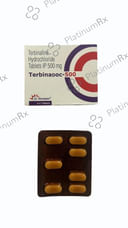
₹174.3
MRP ₹348.5
Terbinafine 250mg

₹163
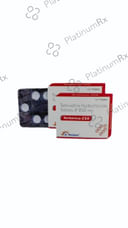
₹137.2
MRP ₹343
Terbinafine 250mg

₹136.4

₹137.2
MRP ₹343
Terbinafine 250mg

₹171

₹137.2
MRP ₹343
Terbinafine 250mg

₹210

₹137.2
MRP ₹343
Terbinafine 250mg

₹149

₹137.2
MRP ₹343
Terbinafine 250mg

₹180

₹137.2
MRP ₹343
Terbinafine 250mg

₹149

₹137.2
MRP ₹343
Terbinafine 250mg

₹145

₹137.2
MRP ₹343
Terbinafine 250mg

₹136

₹137.2
MRP ₹343
Terbinafine 250mg
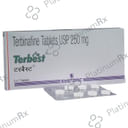
₹98.4

₹137.2
MRP ₹343
Terbinafine 250mg

₹130

₹137.2
MRP ₹343
Terbinafine 250mg

₹84

₹137.2
MRP ₹343
Terbinafine 250mg

₹180

₹137.2
MRP ₹343
Terbinafine 250mg

₹290

₹137.2
MRP ₹343
Terbinafine 250mg

₹170

₹137.2
MRP ₹343
Terbinafine 250mg

₹130

₹137.2
MRP ₹343
Terbinafine 250mg

₹155

₹137.2
MRP ₹343
Terbinafine 250mg

₹160

₹137.2
MRP ₹343
Terbinafine 250mg

₹145

₹137.2
MRP ₹343
Terbinafine 125mg
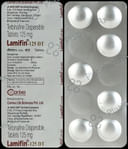
₹115.2
MRP ₹138.8
Terbinafine

₹49.7
Terbinafine

₹110
Terbinafine

₹113.3
Terbinafine
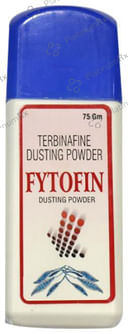
₹150